An Impossible Sculpture was our first introduction to this project, whereupon I came up with several ideas. To do with making the impossible sculpture, we were briefed that we should make a section of the sculpture idea. I wanted to make a miniature of one of my ideas, as I thought that would be more exciting to make and engaging for the viewer. Following through with this thought, I wanted to have the chance to look at the board game ideas that Jasmine and I came up with together.
After talking to Jasmine about the idea that she was looking into, and asking her if it was acceptable to use our idea, and to recreate it in a miniature sculpture. She said yes, and so I started to plan the idea in a scale drawing.
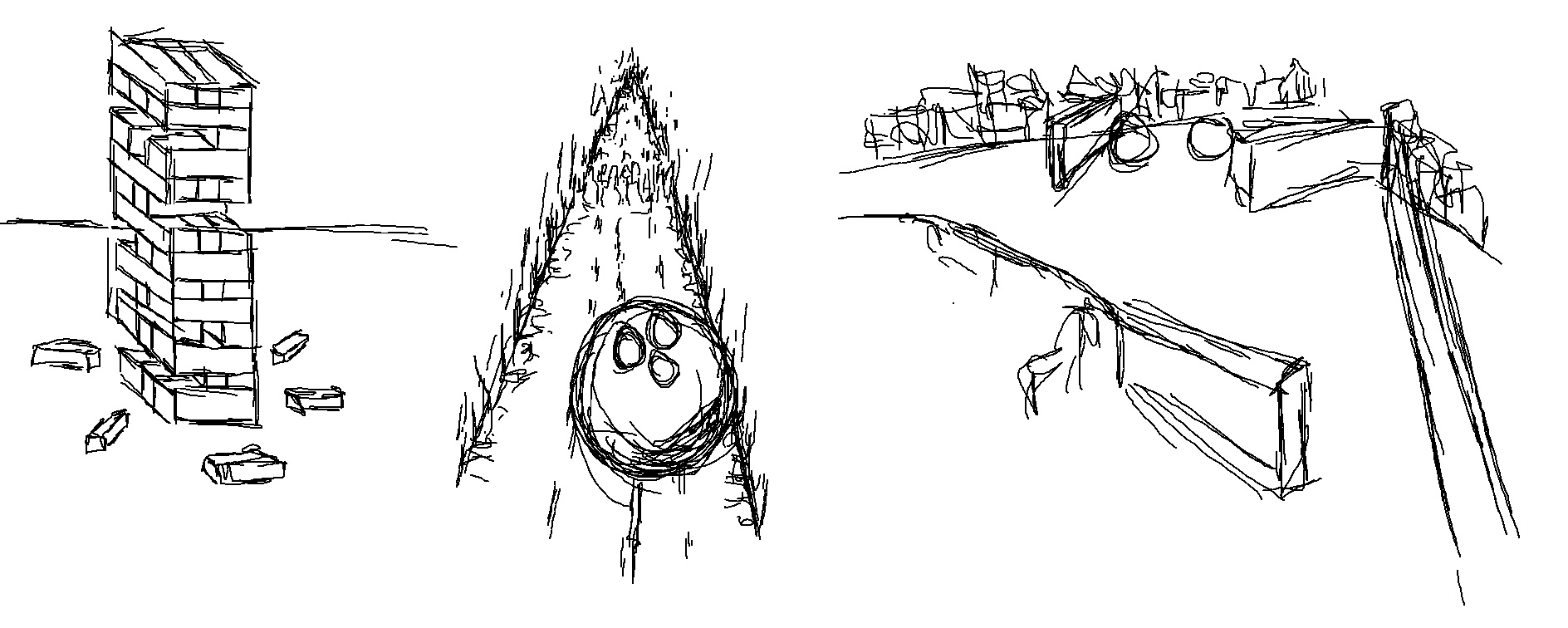
I had a look at all three designs that we had thought of, and I feel like any three of these designs (Jenga/Pinball/Bowling), would have been suitable to continue on within this project, however I wanted to create a scale version. Looking at the designs closer, I felt as though the Jenga tower and figures were the most suitable as a scale design (even though I am sure I will create the other two at some other point to create a three piece set), and went on further planning my ideas for this.


The artists that I have been inspired by includes that of Jake and Dino’s Chapman and their piece of Chapman’s Hell. This piece is incredibly detailed, with many elements adding up to intricate scenes. I would like for my sculpture to be this intricate, although maybe with not as many people, blood and gore. Coupled with the intricacy, I would like for the small people that I make to be around the size of the figurines that Nic Joly creates using wire, paper and clay. These are highly detailed small figurines, and I wish to recreate this level of detail. I am unsure yet as to whether the figurines that I am going to make are going to be painted or leave as clay sculptures, but wish to explore this further later on.
As a child, I remember fondly playing with Lego, and wanting to play with small train sets. Looking at these further, they are often to scale, such like I wish my sculpture to be. Mini Models looks further into this, and has inspired me to look at the surroundings of the sculpture, and whether I want to look into adding extra decoration (which I will look into later on). Small People Films has also allowed me to see how small figures can interact with their environment compared to ‘normal’ or ‘every day’ sized figures and objects. I have found by looking at many films, depending on the scale of the figures and surroundings, can impact the level of detail and realism that the figures can contain. So can my figures be very simple? Non-realistic? Simply shapes? Or do I have to be highly detailed as small figures this size can be?
Other artists that I have looked at include;
- William Kass, a photographer who uses food and miniature figures to create scenes on the viewpoint of the miniature figures. This would have been a really interesting prospect to play with the food, as it was part of one of my other ideas for the sculpture. However, I enjoyed the thought of the traditional games being impossible more than food scenes.
- Vincent Bousserez, a photographer who often uses the body and plastic miniature figures to create unique scenes. I loved the unique use of the body and particularly the piece where a small figure uses a lawnmower to shave a beard. I wish to use this uniqueness in my own work.
- Christopher Boffoli is a fine artist and photographer who creates fine scenes with every day foods. These are not as detailed as the work of William Kass, as there are only plain backgrounds. Once again, I love the creativity of the scenes with the food, and the simplicity of the detail that each scene contains. There is not a large amount happening in each scene, but the figures that are in the scenes, and the foods that are used, are highly detailed and placed with caution. I wish to use this simple detail in my sculpture piece.
- Kurt Moses and his wife takes photos of miniature people in everyday settings. These have a high sense of realism about them, because they have been taken with a fish-eye lens, and in humans natural environments such as cities, towns, and beaches. I wish to have the realism that these pieces have which includes the use of the wider world.
- Matthew Albanese is a fine art photographer who shoots landscapes from a tabletop in his studio. His intricate landscapes are made of mostly everyday items that are found in the home and garden. I looked at Matthew Albanese as I am unsure whether I want to expand the pieces to the surroundings such as trees, roads and other daily environments. (I go into detail about this later on) If I wish to do so, I would feel as though I would use same, or similar materials to Matthew Albanese in order to create a surrounding environment for my sculpture to sit in.
- Slinkachu is another artist who uses an external environment. Unlike Kurt Moses and his wife, Slinkachu often uses preexisting forms that are already in the environment, such as a broken pillar or a bag of rubbish left on the side of the road. This has made me consider whether I could exhibit in environments such as this, or take the piece around to different environments and have a photography series along side. This, however, would imply that it is supposed to be this small, but my intentions are for a scaled version. I still wish to play around with different environments and displays.
- Diana Armfield RA uses many mediums, including that of pencil drawings. These pencil drawings are left in a rough state after many layers of lines have been added, in order to create shapes and scenes. I wish to play around with this style of roughness when using the clay, and in the final display of my piece.
- Donald Hamilton Fraser RA uses a soft, complimentary colour palette to paint seascapes. These blues, yellows, whites, and deep greens, are colours that I wish to explore when looking at painting the miniature figurines. I chose the colour palette of this artist, as I wanted to create that same soft use of block colours, even when the scene in its entirety is going to very full and giving a sense of panic. I also wish to see how the colour palette will change the views of the piece, and whether adding more red, for example, will make people think that there is more death in the piece.
- I enjoyed looking at the work of Henry Walsh as I wanted to discover whether the figures in his painting are ‘normal’ sized people simply painted small, or whether they are small figures that are painted their true size. This question is raised as there is either little or no reference to the size of the figures that are painted. I also want to try and explore this question within my work, and possibly look at photographing the figures in order to gain this perspective. I also want to have a play around with the darker colour palette that Henry Walsh explores, with the contrasting bright white background. The main inspiration from this work showever, is the anonymity of each individual within the piece, even though they come together to create a community, and therefore must have character.
- Anita Mandl creates smooth, simplified sculptures of animal forms, including that of a polar bear, penguins and elephants. Each sculpture has no faults or sharp edges to it, and adds to the smooth surface that they indivudually have. I enjoy seeing how each sculpture is detailed enough to identify the animal, however simple enough that it isn’t an overload of information. I wish to play around with having a smooth surface for each of the small figures I intend to create, and whether this still allows them to be anoymous, and yet still have individual character.
- Heather Cassils works with large (generally 2000 pound/~900 kg) block of clay, beating them in a series of kicks and blows. The result of the performance is a lump of clay that has been manipulated in new ways. Each piece is indivudual and unique to that performance. The evidence looks soft, due to the way it has been handled, and the waves that seem to appear in the clay, and yet indestructable, because of the sheer size and weight of the object. I wish to play around with the roughness that Heather leaves the clay in, and contrast it against the soft and smoothness of Anita Mandl’s work and the way in which she produces her sculptures.
- Antony Gormley created a series of small terracotta figurines that filled the floor of a large room. Once again, each of these figures is somewhat impersonal, however you soon start building a connection with each one due to the way in which they all stare at you in one giant wave. Each time you look at the pieces, you spot something new. I also enjoy the sheer scale of the number of figurines that are in one space. I wish to explore the number of figurines that I would need for my sculpture, including a room full, to a handful.
- Aurelien Froment looks at Jenga blocks of varying sizes, and allows people to delve into a wooden box in the corner of the room, and make their own structures. I would love for people to participate with my Jenga tower in this way, and yet at the same time, the tower and the clay figures are very delicate, and I do not wish these harm. I have therefore decided to leave the tower half played, as though people are in the middle of playing Jenga, just as Aurelien Froment’s piece is half played at the end of the night.
Above: a selection of images representing the variety of inspirations for this project. See relevant posts for more images.
Little People
There was a lot of work and preparation into what the miniature figures were going to look like, what materials they were made out of, and the colours that they might be painted. Overall, this was a long process, even when the ‘final design’ of the figures were chosen.
For the little people, I decided to explore different mediums that which I could make them in, that the artists I have been inspired by, have also explored.
I firstly looked at toy soldiers, but quickly found that the positions that they were in, and the accessories of guns and hats, was not the environment that I wanted to create. There was not an easy way that I could determine to reshape them, and so decided to look into making the figures myself.
When making the people, I first decided to look at wire. Using floral wire, which is generally very thin and malleable, I was able to create some small figures, however if one mistake was made for the proportions, then there was enough wire in order to create the legs, and to connect legs from an extra piece of wire was not worth that extra wire. Not only were the legs a problem, but there was no way in which they were able to stand up (hence the pen and the pencil in the photos). This was wire out of the window.
I know I just said that wire was out of the window, however I decided to give it a chance when mixing it with paper and clay. What mistakes these were. Both the clay and the paper were hard to manipulate around the wire, and both additions made the figure loose its shape very quickly. There was no easy way of attaching the paper to the wire, or to sculpt it around the finer areas, such as the head of the figure. The clay looked okay, apart from creating an overweight character that could not stand up. However, once the clay dried, there were large cracks, and thus was deemed improbable material for the miniature figures.
This led me to the use of clay only for the miniature figures. I did not think that this was going to work, however after a quick play around and following a tutorial on how to make a clay figure (mine unfortunately broke before I managed to take any photos) – www.youtube.com/clayfigure – I felt like I was getting the hand of things. Now I had to choose the size, and also how difficult I wanted to make my job. Because I was doing the sculpture at 1:50 scale, I decided to search up the average human height (~180cm according to WorldData), and divide by 50 = 3.6cm. I felt that this was too talk, especially considering that toy soldiers are around 3cm, and when placed near the bricks, seemed a better size.
I made around 50 people in order to get a ‘crowd’ sensation, and to get lots of different personalities and styles within the piece. I decided to keep them quite plain with no accessories such as hair and clothing, as this would make the pieces seem ‘out of the norm’ and carving would make the clay very weak. The lack of facial expressions with the mix of individually made, does give them their own personalities in the environment. I enjoy this aspect, as there are no two the same, such as humans in society, and I sometimes feel as though I can pick out the figure that I feel most like (at that point in time that is).
Colour was also an important aspect to chose upon, including what colour palette to use and also whether the people should be painted, or not. I decided to use a similar colour palette to Donald Hamilton Fraser RA. These colours included;
- Blues: Ocean Horizon, Blue Wash, Blue Prism, Blue Bottle, High Altitude, White Lightning, Droplet, Morning Jewel, Lunar Landscape
- Yellows, oranges, reds: Garnet Symphony, Deep cream, Banana Dream, Moroccan Sands, Ripe Mango,Golden Nugget
- Greens: Lime Zest, Deep Forest, Green Slate Path, Moss Green
- Browns: Char Latte, A Seat at the Globe, Buccaneer, Chocolate Cream Pie, Deep Autumn, Nutmeg Dust
- Purples: Heather Bloom,
- Whites: Quartz Grey, Indian White
I decided to not paint the rest of the figures as the paint was much harder to apply than anticipated. It was hard to apply (for example, I could not get underneath the arms in the little person I painted), the clay soaked up the paint, and it was incredibly patchy and overall looked horrible. There was also the challenge of hair and accessories, that I ummed and ahhed about, and which would take even longer than necessary to complete on each figure. Adding colour to all of the figures would also distract the viewer of the piece from the simplicity of the sculpture, and what it ultimately represents. I mentioned earlier that I feel like I could sometimes pick out the figure that I am at that particular moment, and that they are all individual with personalities. I feel that adding colour to all of them would make this too obvious, and people would not get the meaning of the small figures, but just marvel at the detail of them.
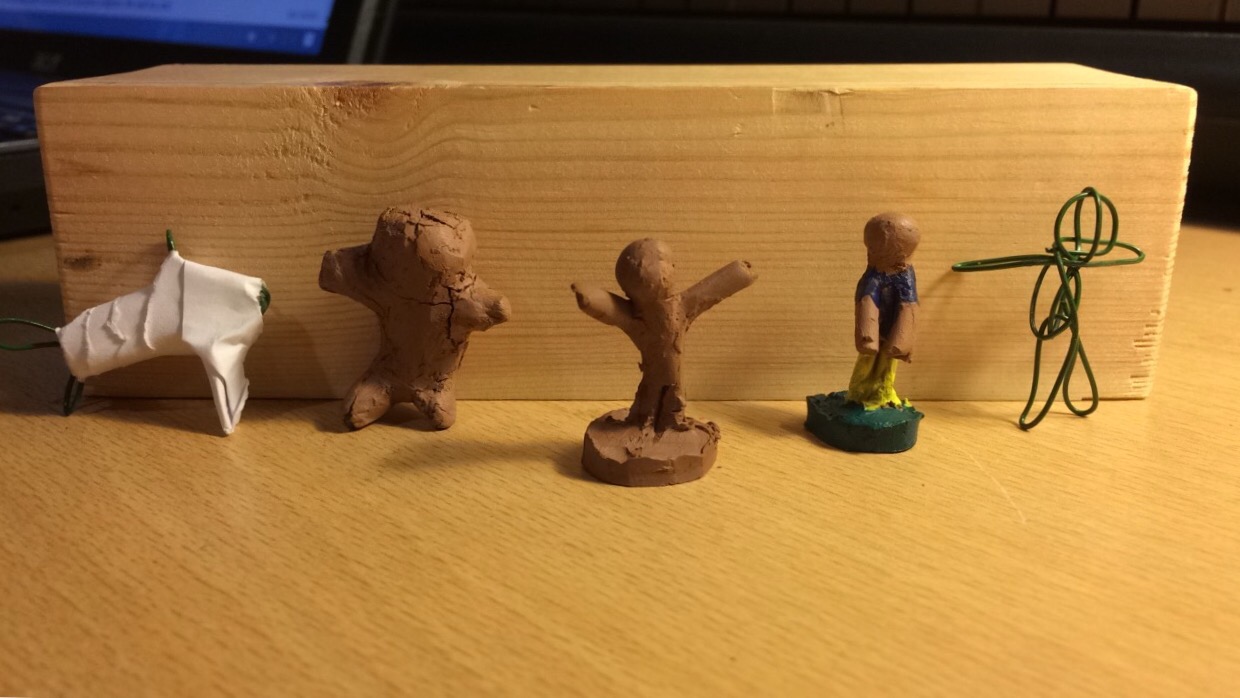
Jenga
For the Jenga part of the sculpture, I decided that I wanted to cut wood, such as the traditional Jenga game. There are 54 pieces all together, in 18 layers, inspired by the giant, and normal table-top Jenga games. We had 2×2″ wood that was available to use, and found that if three pieces were placed next to each other, this would be the same as 15cm. I then cut the wood as 15cm long each, so then the tower would sit square. Once the pieces were cut, I saw that there was a difference between the length of the pieces, and the width of three of them placed together. Oops. Instead of pondering on this, I decided to sand down the edges of the pieces, not only to sand away the rough parts and splinters, but also to create a rounded edge on each of the pieces. This, for me, created a more professional look, such as the original Jenga game, and makes the pieces themselves look flowing.
The misjudgement of the sizes did take me by surprise, as the wood that was cut, was not in fact 2×2″. This did make me a little annoyed, however I pieced the whole tower together with spaces in between the three pieces in each layer, and felt as though this has worked better than a solid tower would have done.
To see how I pieced the Jenga tower together for the final sculpture, see Displaying an impossible sculpture.
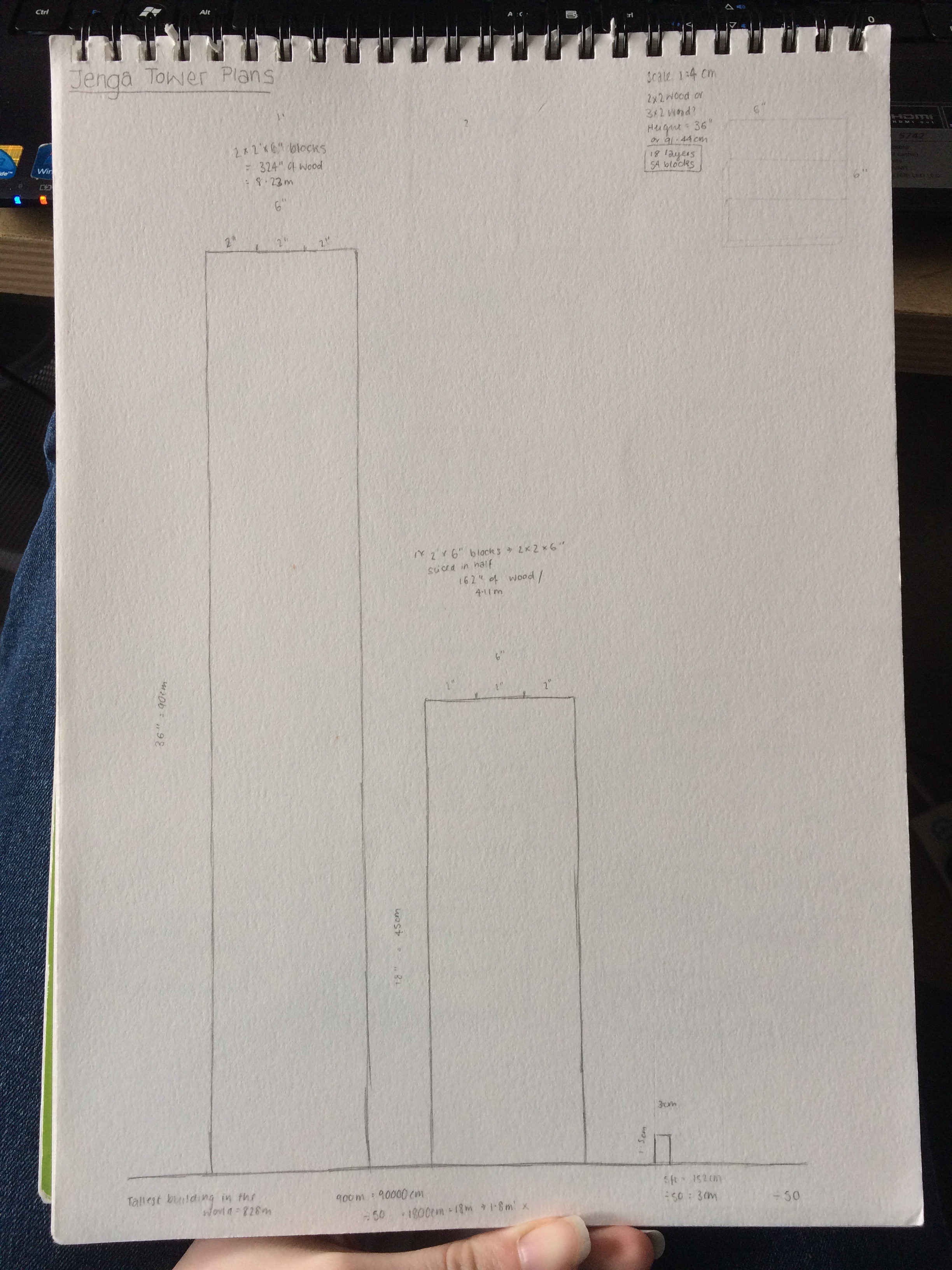
There are a couple of expansions that I could do with this sculpture. First of all, I could add decorations such as trees, roads and houses, in order to create a full landscape. This has been inspired by many of the artists as they also work with the larger landscape. However, I soon realised that this would not only be too much work, but this would have also taken away the detail of intricacy of the clay people and the Jenga tower. As the piece is all about the relationship between these two, I did not want to take the viewer away from this intricacy.
There is also the expansion of different games, that were originally thought of alongside the Jenga tower. This includes a pinball game and a bowling alley through streets. Once again, I feel like I would have enjoyed making these, however there is a lack of time and I also feel that more than one impossible game sculpture, would detract the attention from the original Jenga tower and clay figurines.


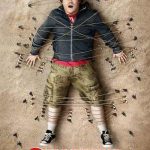
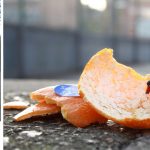
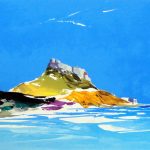
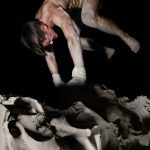
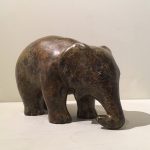
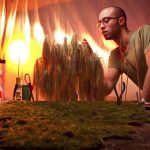
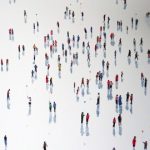
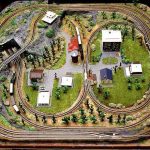
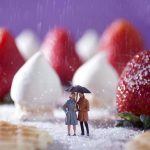
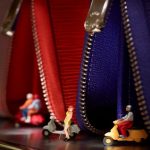
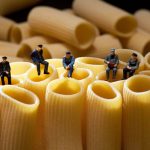


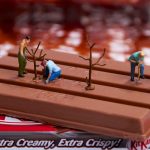
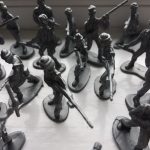
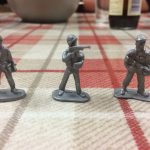
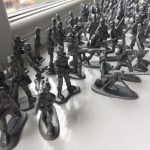
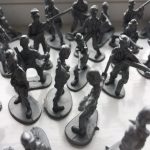
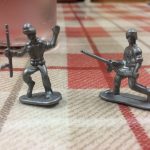
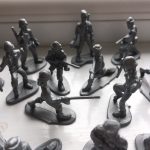
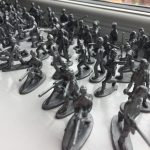
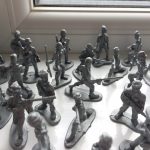
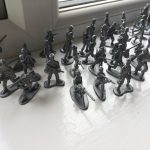

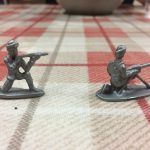
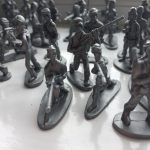
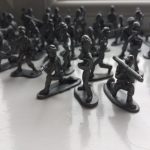
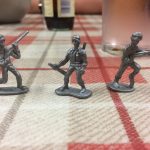
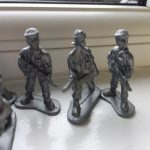
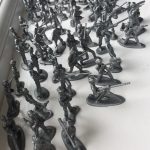


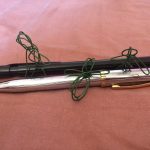
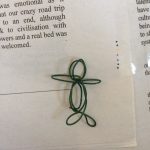
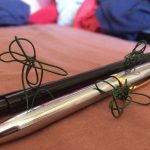
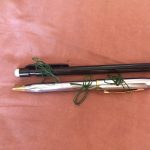
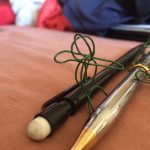
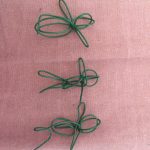
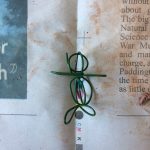
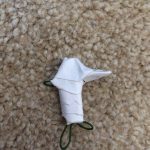
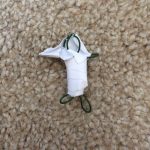
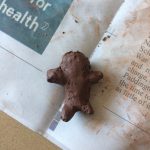
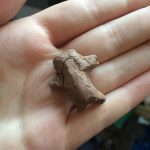
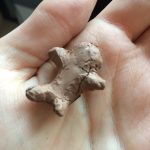
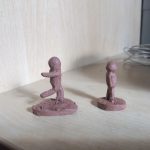
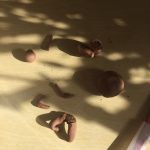
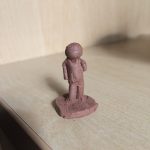
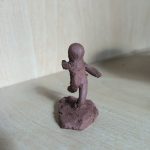
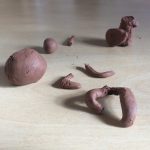
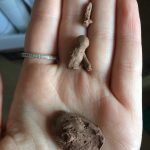

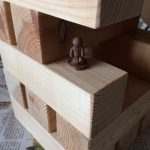
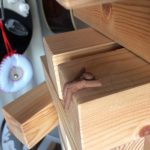
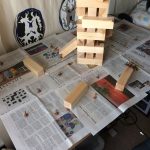
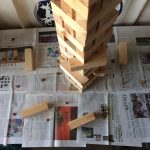
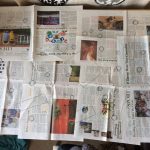
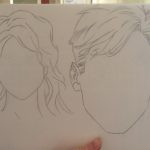
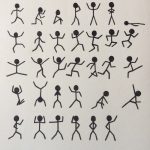
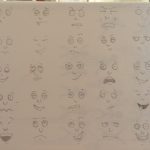
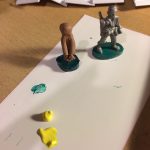
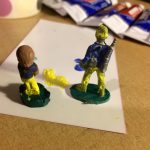
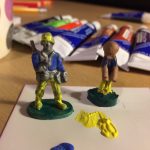
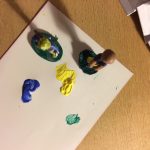
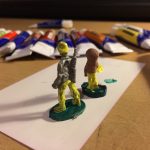
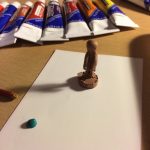
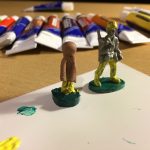
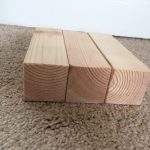
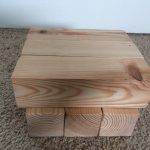
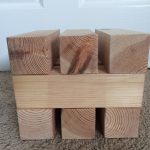
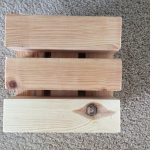
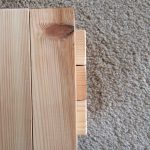
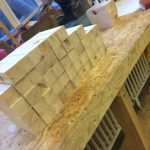
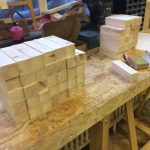
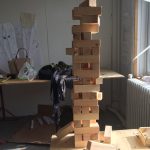
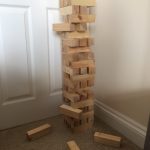
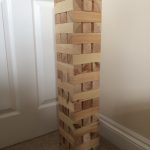
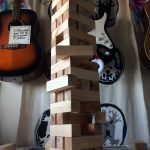
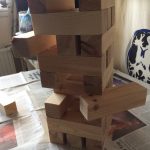
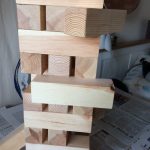
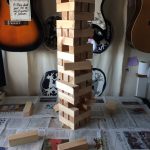
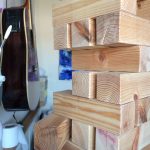
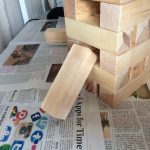
Leave a Reply